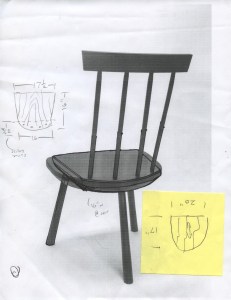
I like SketchUp – not as a tool for designing furniture, but as a way to communicate complex ideas across vast spaces.
Instead of sending someone endless sheets of drawings, I can send an electronic model that the recipient can take apart and modify with ease. That’s the beauty of the program.
For most design chores in my shop, however, SketchUp is too slow. Paper, pencil and my imagination are far more efficient when I need to communicate my ideas only to myself. And when I do use SketchUp to model something for myself, I don’t draw any standard joinery – that’s a waste of time.
I can hear some woodworkers out there fashioning a hangman’s noose from a mouse cord.
So let me say this: If you enjoy drawing dovetails in SketchUp, by all means draw them. If you are facing a tricky joint with lots of intersecting elements, by all means draw the joint. If your hobby is drawing furniture in SketchUp while pretending to work as an insurance claims adjuster, then by all means draw the pee out of that joinery.
But if you just want to see what the object looks like in the round, you can skip drawing the joinery. Your drawers can be rectangles drawn on a box (yes, I’ve done this). You can draw the square parts of a project in SketchUp, print it out and then draw the curvy details on the printout. Yes, I’ve done this as well.
 When else should you draw the joinery? When you are trying to explain it to someone else who might not know squat about joinery, such as when you write an article for a magazine. I draw all the joinery, mouldings and interior bits when I submit a SketchUp model to a magazine. That helps me develop a good cutting list for the article. And it helps me double-check my writing so that the illustration, cutlist and story all agree.
When else should you draw the joinery? When you are trying to explain it to someone else who might not know squat about joinery, such as when you write an article for a magazine. I draw all the joinery, mouldings and interior bits when I submit a SketchUp model to a magazine. That helps me develop a good cutting list for the article. And it helps me double-check my writing so that the illustration, cutlist and story all agree.
But when my ideas go from my head to my hands, SketchUp is rarely involved.
The illustrations with this article demonstrate my working sketches for the recent backstool that I built and then modified. They are crude compared to SketchUp, but they work.
This, I can tell you, is exactly how some craftsmen worked in the 18th and 19th centuries. And that is what I’ll discuss tomorrow.
— Christopher Schwarz